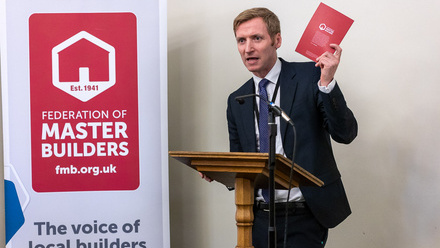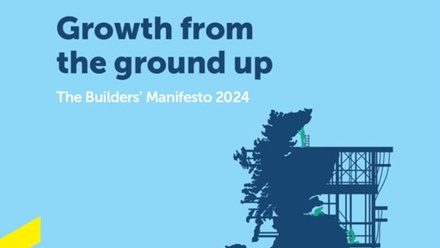*Sponsored content
As March approaches, many property owners will be planning to get their properties listed so that they can be sold when demand outweighs supply and properties fetch better prices.
There are many home improvements that can be made to increase the value of your property. Some are easy to fix like improving ‘the kerb appeal‘ of your property by giving a fresh coat of paint to the front door, cutting the lawn and planting colourful plants in the flower beds. Others are bigger and more costly projects, but definitely increase the value of your property. One of these projects is the installation of cavity wall insulation.
What is cavity wall insulation?
There are various kinds of cavity wall insulation. Some are incorporated in the house as it is built and others are added at a later date in older properties. The insulating material is inserted between the outer and inner brick walls. The insulation is an effective way to prevent damp problems in the house, because the insulating material will prevent the damp penetrating from the outside. Another important benefit for having cavity wall insulation is to insulate your home. If you have insulated floors, walls and roof, you will significantly reduce your fuel bills because much of the heat in a home without insulation is lost through the walls and roof.
Since the 1920s, most houses have been constructed with two brick walls - an inner and outer wall. These two walls are built with a gap between them as the layer of air was thought to provide good insulation. It was then found that far better insulation could be achieved if the ‘cavity’ between the two brick walls was filled with insulating foams, mineral or natural wool, hemp or wood fibre. This layer insulates the house by preventing cold air penetrating through the walls in the winter and the heat during the summer. All houses built since the 1980s have been built with cavity wall insulation.
Do many homes have insulation?
According to the Department of Energy & Climate Change, out of the 27 million homes in the UK, 13.4 million have cavity wall insulation. This figure is equivalent to 70% of the houses built with cavity walls. Interestingly, a further 240,000 have cavity wall insulation installed each year. The main reason is because cavity wall insulation is a recommended home improvement. It has been proven that having good insulation can reduce heat loss through the house walls by up to 35%. This means an annual saving on fuel bills for the average house of £250- this figure is from the Energy Saving trust (2018) based on a three bedroom house with gas central heating.
Importantly, not only do cavity wall insulated homes save money, they conserve energy.
The UK government is committed to reducing the UK’s carbon footprint by 2050 and aims to reduce the use of carbon energy by 80%. At present, 26% of this energy is lost into the air through poor insulation. By having cavity wall insulation installed in your home you will be helping to conserve energy and reduce your family’s carbon footprint.
Another bonus is that cavity wall insulation acts as effective sound proofing too as well as preventing damp.
Why is it important to house buyers?
House buyers are seeking energy efficient homes and one of the first questions you are likely to be asked is whether your property is well insulated. If you cannot confirm that the property has good insulation, you are likely to be given an offer on your property that is lower than expected. This will reflect the house buyer’s requirement to have cavity wall insulation installed.
Because house buyers are becoming very energy efficiency aware, houses with good cavity wall insulation are attractive to property buyers and if you have recently had the insulation installed and it has a 25 year guarantee – even better!
Is it easy for insulation to be installed?
If your property does not have cavity wall insulation, it can be installed relatively easily. The engineers will need to check that the cavity is in good condition with no mortar or other debris between the two walls. It is important that the brickwork is in good condition too.
The insulating layer is installed by drilling a number of small holes at regular intervals in the outside brickwork and it is through these holes that the insulating material is pumped. Once the engineers are happy that the insulating foam has been inserted to the right thickness and density, the holes are then sealed.
If your house was built prior 1920, it will be of single wall construction, but can still be insulated using different methods.
What is the cost involved?
If you are considering having cavity wall insulation removed or installed in your home, you may be surprised and delighted at how reasonably priced it is as it will add more than the installation cost to your property.
Homeowners and landlords in England can also apply for a Green Homes Grant voucher to help cover the cost of cavity wall insulation. The scheme covers two thirds of the cost of installing energy efficiency improvements, including cavity wall insulation, in a home up to a limit of £5,000. The works must be completed by an accredited tradesperson and the scheme runs until 31 March 2022.
Check that the company you choose to carry out the work is accredited. For example, members of the Cavity Wall Insulation Guarantee Agency (CIGA) or The National Insulation Agency (NIA) give a 25-year guarantee on their product and its installation.
If you do have cavity wall insulation but it is 25 years old or more, it is a good idea to have it checked, if you are planning to sell your house, or if you suspect that damp is permeating into your home. Unfortunately, because the UK has a damp climate, it is not unusual for problems to occur in the cavity wall insulation. In time, the insulating material can get damaged or start to sag and this can cause heat loss and also allow damp to permeate. If you suspect such a problem, always get a professional to check it out sooner rather than later. Prolonged damp problems can lead to larger problems – and bills.
And if you are planning to sell
March is traditionally the start of the house selling season and properties that are sold in the early spring command good prices as demand outweighs supply. If you would like to sell your property quickly and trouble-free way, get in touch with House Buy Fast – because they will!
Disclaimer: This blog post is sponsored content, which is independent of the FMB. Publication does not constitute endorsement or recommendation from the FMB.




